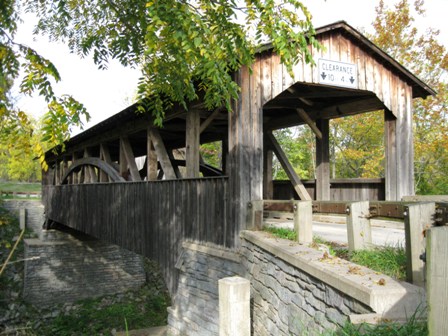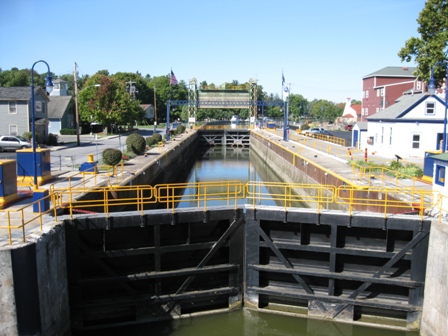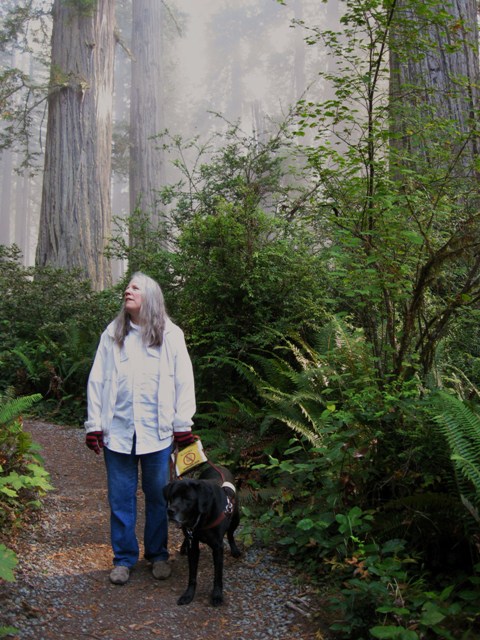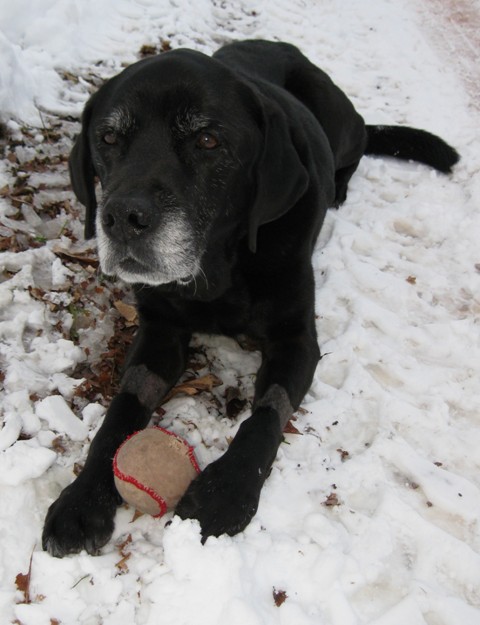
Do you take comfort in certain manmade structures? Two of my top three – lighthouses and covered bridges – have virtually universal appeal. Lighthouses are beacons of hope, turning unforeseen disasters into visible rock formations, skirted with a flick of the helmsman’s wrist. Covered bridges, with their rustic beauty, promise shelter from the storms and safe passage over the rapids for the weary traveler. But, locks? What’s up with that?

Canals: an Overview

Ever since first grade when Mrs. Myers told us about the Erie Canal, I have been fascinated. So, what’s so special about manmade waterways? After all, Nature does waterways with a flair for beauty and detail that eludes mere mortals. But, if you look more closely, the reasons behind these structures and how they work might just capture your imagination, as they have mine.
Streams and rivers are wonderful ways to transport people and their belongings … that is, if you don’t mind carrying your boat and supplies every time you encounter rapids, waterfalls, marshes and dry land. In the case of the Panama Canal, oceans work, but who wants to travel all the way around South America? If you want to take advantage of shipping via water, which is still the cheapest option, Nature’s best just doesn’t quite cut it. Canals provide an efficient remedy.
The Erie Canal opened in 1825, and has undergone many expansions and enlargements since. The concept, however, has remained the same. Instead of trying to navigate moving water that twists and turns and gradually and often not so gradually descends or ascends, canals are straight and level.
Moving to higher or lower elevations is accomplished by raising or lowering the level of a section of the canal until it reaches the level of the next leg of the journey. This is not quite as simple as filling and draining a bathtub. From the Hudson River to Rome, New York represented a change in elevation of 420 ft. The canal then descended 363 ft. and rose again to 565.5 ft. at Lake Erie. This was accomplished with a series of engineering masterpieces called locks.
Locks: What they are & How They Work
A lock is a two-part gate across the water, a temporary dam that can be removed and put in place as the situation requires. Leonardo da Vinci’s invention of the miter lock is still widely used today. Closed, its two halves with their 45 degree angles form a ‘V with the point facing into the current. From a little shack, the lock operator controls the locks and the valves that allow water to flow in and out. Rack and pinyon gears, nowadays powered by electric motors, open and close the locks.
The thing about using locks is that you stop traveling via your own power when you enter them. In fact, when “locking through,” your boat gets tied up with bow and stern close to the side walls. In short, you give up control and abide by the rules of the locks. Revving your engines and blowing your horn won’t help you get there any quicker. Your progress depends on someone else and something else.
Symbolism of Locks in This Writer’s Life
There have been many times when I have felt like I have entered a lock; on a gurney headed for surgery, after sending out college applications or job resumes, witnessing a loved one dealing with medical issues or the final transition from flesh to whatever lies beyond, there’s a point when the best I can do is no longer the major factor influencing the ultimate outcome. That’s when I say that I’m in the locks.
The actions of other people matter very much to all of our lives, and we are all more interdependent than we often care to acknowledge. So, to some extent we’re always in the locks. But, some situations make this crystal clear.
Guide Dogs: the Transition

The transition from one guide dog to another, which I have already experienced three times, is definitely a lock experience. The illness of the dearest of friends, the unrelenting need for the independence that friend provides and the life interlude that is the training process with a new helper combine to create major life alterations. I’ve been blessed to have had an overwhelming amount of grace in the past, which enabled me to care for my canine friends in their final days without losing track of how special the experience is.
Our sweet Hunter is 11.5 years old, and his age alone is enough to remind me that our time together is growing short. Added to that, he has been ill this fall, and has lost a scary amount of weight and muscle mass. So far, we’ve spent over $5,000 on veterinary specialists, tests including ultrasound, endoscopy and biopsies and a host of medications and specialty foods.
Canine IBD

Hunter has been diagnosed with inflammatory bowel disease (IBD), not to be confused with Irritable Bowel Syndrome. IBD is an autoimmune disorder, the causes of which are not yet clearly understood. The type Hunter has, Canine Lymphocytic-Plasmacytic Gastroenteritis, occurs when lymph and plasma cells make their way into the lining of the stomach and small intestine. The resulting inflammation makes it difficult for nutrients to be absorbed – hence, the weight loss.
It isn’t fatal, if it is managed. So far, however, he has dropped from 67 to 55lbs. He still enjoys playing a bit with his ball, romping in the snow and going for rides in the car. Eating, however, is problematic. This is a Labrador retriever, so that’s about as abnormal as it gets. Appetite stimulants and hand-feeding are helping, but progress, if there is to be any, is proving to be painfully slow.
IBD is a chronic disease; i.e. it’s not curable. It’s possible that he will recover or at least reach a new normal that will allow him to regain some measure of strength and health. It is also possible that despite our efforts and those of the caring veterinary professionals who have been working with him, that we’ve missed something. Only time will tell.
The View Beyond the Bow

Unlike the locks we love on the Erie Canal, we don’t understand this life transition enough to be certain which way we are headed. We’re securely tied to the canal, waiting for word from the lock operator about how to proceed. Is the water rising or falling? Will the next phase of the journey be open waters or yet another lock? Whatever the final outcome, we will be diligent and listen for the lock operator’s promptings.
Resources: Canals & Locks
The Erie Canal: Making it Work
http://www.eriecanal.org/UnionCollege/Making_It_Work-add.html#add
The Erie Canal: the Lock
http://www.eriecanal.org/UnionCollege/The_Lock.html
New York State Canal System: How to “Lock Through”
http://www.canals.ny.gov/navinfo/index.html#lockthru
Tips for Locking Through
http://www.eriecanalway.org/explore_things-to-do_boating_lock-tips.htm
Things to Do on the Erie Canal
http://www.eriecanalway.org/explore_things-to-do_locks.htm
Leonardo da Vinci’s Canal Lock
Resources: Inflammatory Bowel Disease in Dogs
Inflammatory Bowel Disease Due to Lymphocytes and Plasma in Dogs – PetMD
http://www.petmd.com/dog/conditions/digestive/c_dg_gastroenteritis_lymphocytic_plasmacytic
Canine Inflammatory Bowel Disease IBD – Chronic Diarrhea and Vomiting in Your Dog by Ron Hines DVM
http://www.2ndchance.info/inflambowel.htm
Inflammatory Bowel Disease May Threaten Your Pet’s Well-Being by Dr. Karen Becker
Diets for Pets with Gastrointestinal Disease from PetMeds (r)
http://www.1800petmeds.com/education/diets-pets-gastrointestinal-disease-30.htm
The Best Food For Dogs With A Sensitive Stomach from Dogs By Nina
http://www.dogsbynina.com/best-cheap-dog-food/the-best-food-for-dogs-with-a-sensitive-stomach/

Hi,. Donna,
Thank you so much for sharing your experience with Hunter, with us all….for letting us know some helpful approaches. Please scratch Hunter behind the ear in his favorite place for me, and know we are all thinking of you both as you go through this together. Helen
LikeLiked by 1 person
I love this post and how you transitioned from the physical locks to the metaphor of life then to dear Hunter. Living in Pittsburgh and being surrounded by three rivers I’ve had the pleasure of going through our locks on a couple of our Gateway Clipper boats and I too have been fascinated by them but didn’t fully understand the mechanics of how they work.
When I read your symbolism of locks I was reminded of how little control we humans have in this life. Being a little OCD this is a problem for me and I constantly have to be reminded that I really am not in control (although I stubbornly refuse to admit it most times).
Though I do not have a guide dog (been thinking about it) I do have a little terrier mix that I rescued 7 years ago and I can’t imagine life without her. This is probably another reason why I’ve been stalling on the possibility of using a guide dog but I digress.
My favorite line: “We’re securely tied to the canal, waiting for word from the lock operator about how to proceed.”
LikeLiked by 1 person
Stephanae, thanks for your comments. I didn’t know about the locks near Pittsburgh. I’ve had 4 guide dogs, and the only thing worse than losing them would be never having had them to begin with. One of the great tragedies of this life is that our furry friends have a much shorter life span than we humans. Good of you to rescue your little dog, by the way. Best of luck with whatever you decide to do guide-dog-wise.
LikeLiked by 1 person
Pingback: Smorgasbord Posts from Your Archives – #Family – Symbolism of the Locks on the Erie Canal & an Author’s Dog Fighting IBD | Smorgasbord Blog Magazine